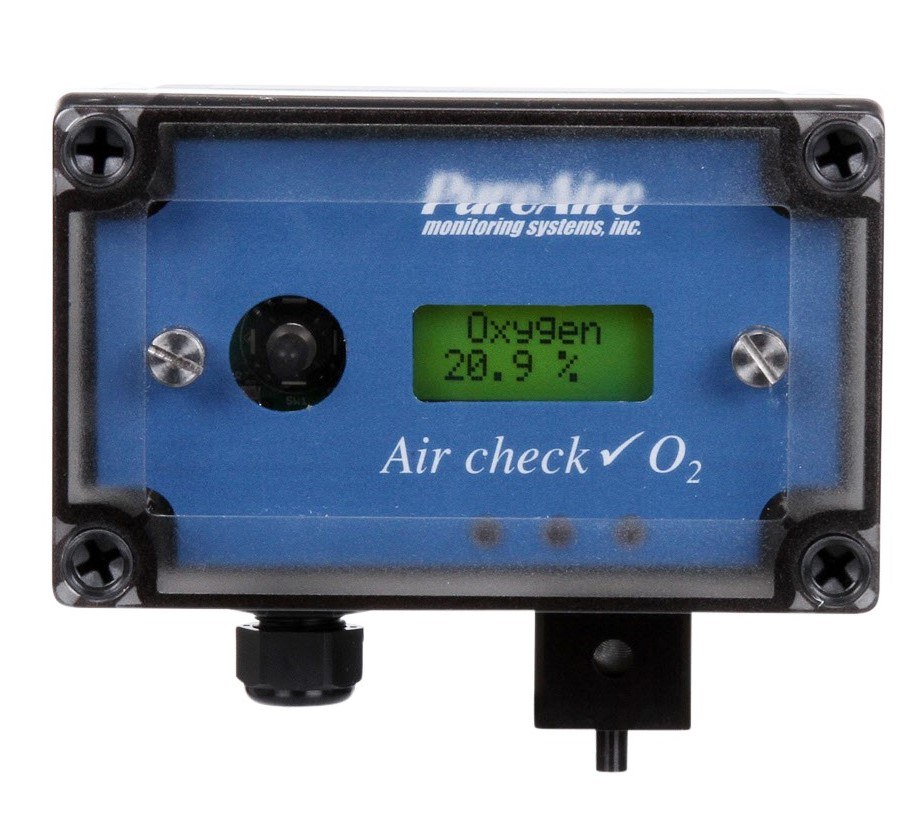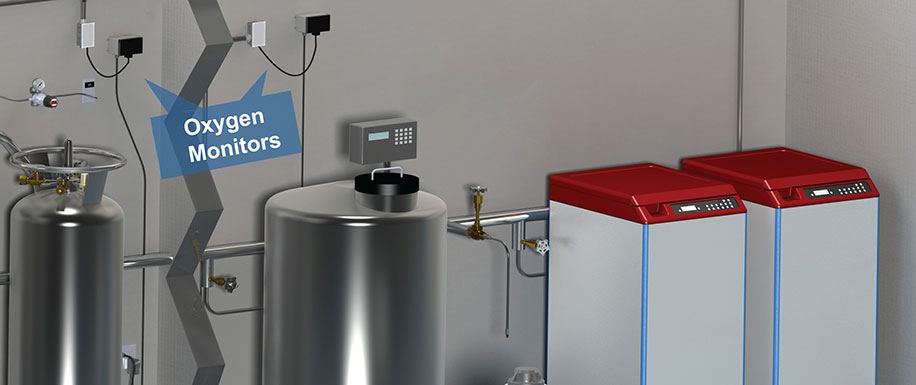What is a Room Oxygen Deficiency Monitor?
- By : PureAire Monitoring Systems
- Posted on : March 24, 2020
- News Room
Many industries use compressed gas to create products. While compressed gases such as nitrogen are low-cost, easy to use, and flexible in a range of industries, these gases have a hidden downside: They displace oxygen from the air, which puts your workers at risk of suffocation if there’s a leak. A room oxygen monitor checks levels of oxygen and provides in-time alerts if there’s a gas leak. Learn what a room oxygen monitor does, how it works, and who needs one.
What Does an Oxygen Monitor Do?
Inert gases, such as nitrogen, displace oxygen. Since these gases cannot be seen or smelled, facilities need a tool that’s capable of detecting gas leaks. An oxygen monitor tracks levels of oxygen in a room and provides efficient notification if oxygen levels fall as the result of a gas leak.
Oxygen monitors may be called O2 monitors or oxygen deficiency monitors. While these names are all synonymous, there are a few other terms you might hear that do not refer to this kind of oxygen monitor.
In the medical and pharmaceutical industries, you may come across blood oxygen monitor, pulse oximetry, or oximeter products. These are totally different products than the oxygen deficiency monitor, and they will not protect against gas leaks. You’ll find medical oximeters sold at pharmacies and online retailers, while oxygen deficiency monitors are sold online, through distributors, or directly from manufacturers like PureAire.

Which Industries Use an Oxygen Monitor?
Oxygen monitors are used by businesses in the following industries:
- Food and beverage
- OLED
- Semiconductor
- Automotive
- Pharmaceutical
- Medical gas
- MRI
- Cryotherapy and cryohealth
- Cryopreservation
- Egg freezing
- Research and development
Businesses in these industries commonly use gases such as nitrogen in everyday operations. An oxygen deficiency monitor not only provides in-time notification of gas leaks but may be required by regulations. Failing to install an oxygen deficiency monitor could leave you out of compliance, which could lead to fines.
How Does an Oxygen Monitor Work?
An oxygen monitor works by using a sensor to check levels of oxygen. A digital display interface shows readouts in PPM, PPB, or percentage, so your workers can tell at a glance that everything is functioning properly.
When levels of oxygen are at naturally occurring levels, the oxygen monitor stays silent. Employees can still check the readout for peace of mind. When something is wrong, an loud alarm goes off to provide your workers with instant notification of a safety threat.
PureAire’s line of oxygen monitors feature a unique zirconium sensor, which is designed to function for 10 years or more with no maintenance. Unlike other types of O2 monitors on the market, our oxygen monitor does not need regular maintenance or calibration. Your facility will save time and money when you choose PureAire products.
PureAire’s O2 monitor perform in a range of environments, including confined spaces, basements, and freezers. Capable of accurate readouts in temperatures as low as -40 C, our oxygen monitors never drift from barometric pressure shifts or thunderstorms.
Do you have questions about oxygen deficiency monitors? We’re here to answer your questions. Chat with us online or call today: 888.788.8050.



